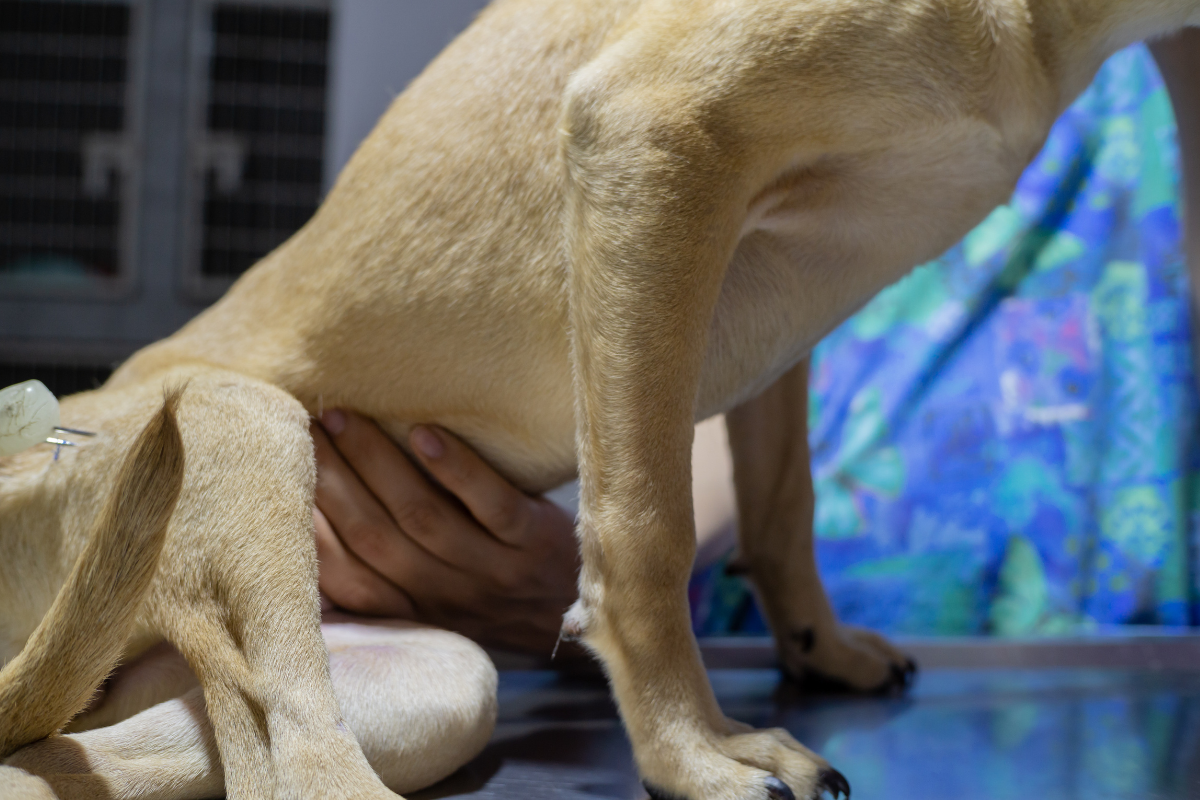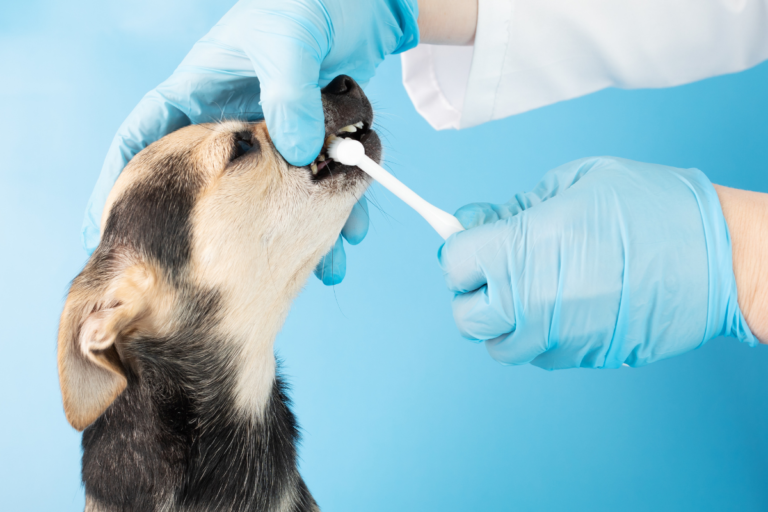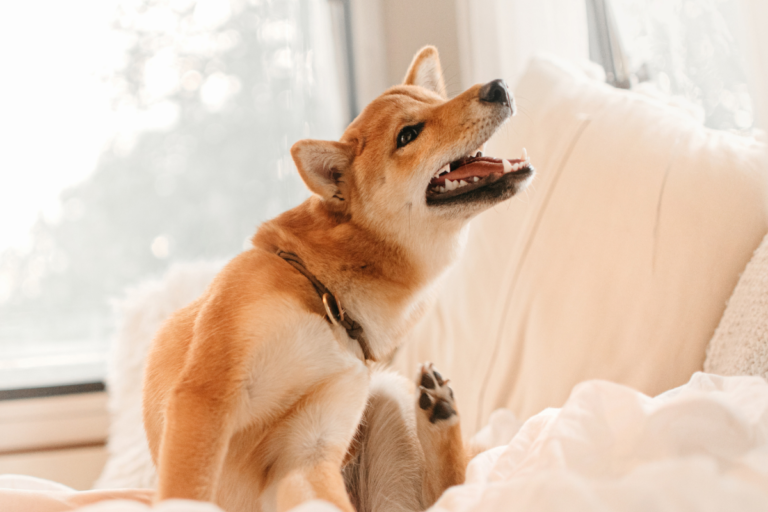Shedding Light on Ringworm: Dog Symptoms to Watch For
Understanding Ringworm in Dogs
What is Ringworm?
Ringworm might sound creepy, but don’t worry, it has nothing to do with actual worms! It’s a skin infection caused by a pesky fungus. Your pup might show up with some scaly bald spots that look suspiciously like rings, hence the name (WebMD). This troublemaker doesn’t discriminate and can bother just about any pet, including our beloved dogs.
Causes of Ringworm in Dogs
So, what’s responsible for this fungal mayhem in your pooch? The main culprits are tiny fungi with the most popular being Microsporum canis, which shows up in a whopping 70% of infections (Merck Veterinary Manual). Dogs can pick up ringworm by:
- Getting up close and personal with infected animals
- Sharing things like brushes, collars, or beds that carry the fungus
- Sniffing around soil filled with ringworm spores, especially in those damp, warm locales (PetMD).
Once infected, a dog can spread it around for a good three weeks unless it gets treated like it means business (VCA Hospitals). Knowing how this infection gets around can help us keep it from bugging our furry buddies.
Curious about other doggie dilemmas? Peek at dog diseases and symptoms, dog illnesses, and symptoms of fleas in dogs for more info.
Symptoms of Ringworm in Dogs
Let’s chat about the telltale signs that your pup might be dealing with ringworm. Catching those sneaky symptoms early means we can jump in with treatment and spare our dogs any extra itchy misery.
Visible Signs
Ringworm likes to make itself known with some pretty clear signals. Here’s what to keep an eye out for:
-
Round Bald Spots: Those bare patches of skin can pop up anywhere but love to hang out on faces, ears, tails, and feet. The edges are usually red and crusty.
-
Flaky Skin: See some dry, flaky stuff going on? It’s a big hint that ringworm’s in the house and deserves our attention.
-
Red Swollen Spots: These lumps can get pretty gnarly—red, puffed up, maybe even scabby. They often start small and creep outward as they heal in the middle.
-
Snapped Hair: The hair in affected areas doesn’t stand a chance against ringworm, breaking off and making for obvious hair loss.
-
Pimply Bumps: Some dogs get these tiny, acne-like bumps. Not cool, ringworm, not cool.
-
Dark Skin Patches: The infected spots might also take on a darker shade, just adding insult to skin injury.
| Visible Symptom | What’s Happening? |
|---|---|
| Round Bald Spots | Look for red edges; common on face, ears, tail, feet |
| Flaky Skin | Dry skin flakes in affected spots |
| Swollen Spots | Red, puffy, scabby patches |
| Snapped Hair | Breaks easily, causing thinning patches |
| Pimply Bumps | Small, acne-like bumps |
| Dark Patches | Darker shade in infected spots |
Don’t be shy—check out our article on all things skin issues with dogs if you’re intrigued: dog diseases and symptoms.
Behavioral Changes
Ringworm isn’t just about the skin drama; it messes with our dogs’ mood, too. Watch out for these behavior changes that come from the itch and scratch:
- Scratch Attack: Non-stop scratching? Typical. Those infected spots can drive a dog nuts.
- Licking and Chewing: Some dogs deal with discomfort by licking or chewing at sore spots more than usual.
- Fidgeting: If they can’t seem to settle down, it’s probably the itch talking.
- Touch Me Not: When touching certain spots makes them wince or pull away, it’s a clear “back-off” signal.
Spotting these actions early means we can tackle the problem before it worsens. And remember, if something feels off, a vet visit is always a smart move. For some extra deets on other weird doggie stuff, you could hop over to our page on bloat symptoms dog.
Together, we’ll be on the lookout for these clues ringworm leaves behind, so we can keep our pups happy and comfy. And hey, always run things by your vet to nail down the right treatment.
Diagnosing Ringworm in Dogs
Spotting ringworm in our pups is super important. Not only does it help us treat the problem, but it also stops other pets or folks from catching the infection. Let’s chat about how we figure out if our playful pooch has ringworm and why it’s handy to have a vet give their two cents.
Methods for Diagnosis
We’ve got a few tricks up our sleeve when it comes to pinning down ringworm. Each one comes with its high points and hang-ups, making them good fits for different situations:
-
Wood’s Lamp Examination: Here’s a cool one—a Wood’s lamp shines a special ultraviolet light that helps us find certain types of ringworm. If the fungus is there, it’ll glow in this funny yellow-green. But heads up, not all kinds play nice and show up this way (PetMD).
-
Fungal Culture: The gold standard right here. For this, we snag some hair and a bit of skin from the spot in question and let it mingle in a lab dish for a spell. It’s the very best way to know what’s what (VCA Hospitals).
-
PCR Test: This high-tech option zooms in on the DNA of the fungus at warp speed. While it works fast, it’s not the go-to when checking back to see if ringworm’s really packed up and left.
| Diagnostic Method | Advantages | Limitations |
|---|---|---|
| Wood’s Lamp | Quick, Non-invasive | Not reliable for all types |
| Fungal Culture | Accurate, Comprehensive | Takes time |
| PCR Test | Fast results | Not ideal for follow-ups |
The Importance of Veterinary Consultation
So, why should we head to the vet for ringworm troubles? Here’s the lowdown:
-
Accurate Diagnosis: Only the vet’s got the know-how and gadgets to give us a solid answer on ringworm, whether using the funky lamp, a lab culture, or even that speedy PCR gizmo.
-
Effective Treatment Plans: Once we’re clued in, the vet helps cook up a solid plan to kick ringworm to the curb. This might mean creams, pills, and pointers on how to stop the spread. For more tips, check out our ringworm treatment guide.
-
Preventing Spread: Vets can track where the infection might’ve started, squashing the chance it’ll hop over to other pets or the humans in our life (Merck Veterinary Manual).
-
Follow-up and Support: With check-ins, your vet makes sure ringworm’s really gone, while being there for any worries that pop up.
Teaming up with a vet does more than just nail down a ringworm verdict. It lines up our furry friends for top-notch care. If you’re hungry for extra tips on keeping pups healthy, wander over to our article on dog diseases.
By getting wise to how to spot ringworm and knowing why a vet’s visit matters, we’re making sure our dogs are happy, healthy, and ringworm-free.
Treating Ringworm in Dogs
Ringworm ain’t no picnic for our pups, and it takes some teamwork — a mix of skin stuff, meds, and clever tactics to kick it to the curb. Let’s stroll through how we can win this fight for Fido.
Topical Treatments
First things first, let’s slap on those creams and shampoos. Since ringworm squats right on the skin, we gotta meet it right there. Creams, ointments, shampoos — these guys dive straight into the action. Folks over at WebMD reckon starting with these is a solid move since they hit the nasty party spot-on.
Popular skin slayers include:
- Antifungal Creams and Ointments
- Medicated Shampoos
- Lime Sulfur Dips
Be sure to stick to the vet’s game plan when using these, so those pesky spores know they’re not welcome. Got more nagging skin woes to sort? Peep into dog gum disease and periodontal disease in dogs.
Oral Medications
If the situation’s getting kinda hairy or pops up again, it’s time for the big guns — pills that work from the inside. These antifungal meds kick the ringworm where it hurts and are lifesavers, especially for our furballs like Yorkshire Terriers (shoutout to PetMD for the insights!).
| Medication Trick | Popular Fighters | When Needed |
|---|---|---|
| Antifungal Pills | Griseofulvin, Itraconazole | When things get nasty! |
Following the vet’s wisdom ensures all’s good, and our furry pal’s not put through the wringer. Dealing with other doggie dilemmas? Check out dog heart disease and canine kidney disease symptoms.
Preventive Measures
Stopping ringworm spread is all about foresight and cleaning like a pro. Here’s the lowdown:
- Keep Them Apart: Quarantine the affected fluffball to stop it jumping to other critters.
- Clean Like You Mean It: Hit the hot spots with disinfectant — diluted bleach’s a hero according to the Merck Veterinary Manual.
- Wash Everything: Hot water’s your friend for bedding, toys, and grooming bits.
- Glove Up: Keep it safe when you’re tackling ringworm head-on.
Want more on keeping our four-legged pals in tip-top shape? Our guides on dogs teeth and tips for straightening curly hair might tickle your fancy.
Armed with these savvy tips from the pros, we’ll knock ringworm out of the park. For more doggie dilemmas, see dog diabetes symptoms and symptoms of fleas in dogs.
Prevention and Management
How to Stop Ringworm From Bugging Your Pup
Ringworm—an itchy little troublemaker—is a fungal infection that many dogs can pick up. We all dread it, but with the right moves, we can win this fight. Ready to armor up and keep this nuisance away? Here we go!
-
Keep ‘Em Apart: Ringworm likes to travel! When your dog plays with infected pets—or even people—the fungus might hop over. Best to steer clear of them to nip it in the bud (American Kennel Club (AKC)).
-
Clean Up Your Act: Dog toys, beds, and accessories tend to collect souvenirs like spores. No thanks! Here’s how we tidy up and kick those pests out (Madison Animal Care):
- Hit the washing machine with the dog bed on a hot cycle.
- Zap toys and grooming goodies with disinfectants.
- Suck up spore hideaways with a regular vacuuming session.
-
Stay Fresh: We’re talking about keeping those paws (and our hands) squeaky clean. Hands off that doggo unless you’ve washed up!
-
Trust the Pros: Got questions about preventing these critters? A chat with the vet could help. They know their stuff and might just suggest the perfect shampoo or treatment.
-
Quarantine Time: If one of our furry pals gets unlucky, a little solo time might be necessary to stop the infection from spreading to others in the animal kingdom or people.
Sprucing Things Up
A good scrub-down can be a game changer. Let’s look at some cleaning tips that’ll chase ringworm away.
- Wash It All: Bedding, blankets, toys—let’s throw them in hot water with a pet-friendly cleaner.
| Item | Clean Often | Method |
|---|---|---|
| Bedding | Every week | Hot water wash |
| Toys | Bi-weekly | Disinfect soak |
| Leashes & Collars | Monthly | Hand wash with soap |
| Grooming Gear | Post-use | Alcohol wipe down |
-
Vacuum Victory: Those carpets aren’t gonna clean themselves! Let’s get vacuuming to swipe up any creepers left behind.
-
Wipe Everything: Sanitize anything your dog lays paws on—like floors or crates—with something pet-safe.
-
Separate Cleaning Stuff: Got tools? Keep those brooms and cloths for quarantined zones only, to avoid spreading fungi.
| Surface | Clean Often | Product |
|---|---|---|
| Floors | Every week | Pet-safe disinfectant |
| Crates | Bi-weekly | Bleach solution |
| Upholstery | Bi-weekly | A steaming clean affair |
Keeping a tidy routine and good hygiene habits can help us squash ringworm problems in dogs. If you need more tips, just reach out to your local vet or dig into our detailed articles on ringworm on dog’s belly and other doggy health issues.
Ringworm in Humans
Oh, the itchy adventures of owning pets! Ringworm isn’t from squirmy worms as the name implies—it’s a sneaky fungal infection and yes, your cuddly canine can pass it on to you and the fam. So, as thoughtful dog folks, let’s get a grip on spotting and stopping this annoying pest!
Symptoms in Humans
Ringworm can crash your comfort zone about 4-14 days after a doggo encounter. How to spot it? Here’s the rundown:
- Rash Alert: Think red, itchy spots with a tell-tale circle shape.
- Skin Drama: Red, scaly, flaky chaos over your skin.
- Bald Spots: Your furry pal’s sharing game too strong? Hair loss near those itchy patches!
These attackers can pop up anywhere but love faces, arms, and legs (not that we blame ’em—everyone wants to be where the action is!).
| Symptom | What It Looks Like |
|---|---|
| Itchy rash | Circle-shaped, red, raised |
| Scaly patches | Red, flaky skin |
| Hair loss | Near rash, often red and irritated |
Keeping Ringworm at Bay
Dodging ringworm takes a combo of our ninja-level hygiene and being a thoughtful pet parent. Handshake on these steps for a clear skin victory:
- Sudsy Hands: Hit those paws with soap and water, especially post-pet snugglin’ if you even suspect a sneaky ringworm presence.
- Hands Off My Stuff: Keep personal items like towels and clothing to yourself if anyone’s playing host to ringworm.
- Clean Sweep: Disinfect all pet hangouts where the fuzzball lounges—sleep spaces, toys, you name it!
- No Close-up Hugs: Steer clear of close snuggle sessions with infected furballs until the all-clear.
- Glove Up: When applying treatments to your pooch, don some gloves. Safety first!
Being ahead of the game in cleanliness helps ringworm exit stage left before it makes itself at home with your crew. Curious for more tips on keeping your dog in top health? Tap into more wisdom with our other reads on dog diseases, dog illnesses, and understanding dog diabetes symptoms.
By staying in the know and taking these hep steps, we protect ourselves while giving our furry friends the love and care they deserve. Feeling inspired? Find more on handling pet health and banishing those bothersome fungi with our articles about dog diseases and symptoms or if you’re daring, delve into ringworm on dogs stomach.
Stay sharp, stay healthy—and keep the love (and not ringworm) flowing strong!






